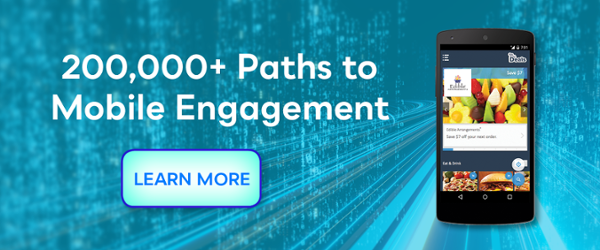Are Your Member Benefits Still Relevant? Millennials, Gen Z & Beyond
You might call me a Millennial. I was born right there on the border of what’s considered a Millennial and a Gen Xer. I can sympathize with both, including the quirks from both.
What does that mean? For one thing, it means I’ll smother mayo on my sandwich while saying “hey Siri, why do people say Millennials are killing mayo?”
But mostly, it means I can understand why “kids these days” behave so differently than the generations before. It’s no wonder they’re perceived as “killing” so many of the things that used to define what it meant to be an adult. They want totally different things, especially when it comes to the relationships they hold with the businesses they frequent.
Younger Generations: Keep Up or Risk Being "Killed"
Businesses may claim Millennials are killing hard work. Is that really true, or do they just value their time, especially the time they could be making a difference in the world, more than money?
Organizations may claim Millennials are killing loyalty. Should we believe this, or do they just have so many choices, an entire world of choices open to them digitally, that they can’t possibly be loyal to all?
Brands may claim Millennials are killing, well, a bunch of brands. Or are they just more skeptical of advertising ploys, relying instead on peer reviews and company values to make purchase decisions?
These are important questions to consider. After all, Millennials, or individuals born between 1980-2000, now make up 1/3 of the workforce. Businesses have been gathering data on them for years, trying to understand what makes them tick. And now Gen Z, comprised of those born between 2000-now, is starting to trickle in to the workforce too. Even though there isn’t as much data about Gen Z yet, they’re showing a lot of the same traits as Millennials.
Cumulatively, these consumers are changing the game.
Luckily they’re not shy about letting organizations know what they want—and don’t want. No one ever accused this generation, with their selfie sticks and hourly check-ins, of under-sharing. They’re showing us the way to their hearts. Those willing to listen and adapt will survive the chopping block.
On the other hand, studies are showing that those who don’t involve and evolve may go the way of Mayonnaise. Here are some questions to ask yourself to evaluate whether your member benefits will still be relevant to coming generations.
Do I Really Know What Benefits They Want?
Millennials and Gen Z have found themselves stereotyped in many different ways. This may be useful for businesses trying to understand an entire generation of unique individuals. However, the only way to really get to know your particular audience is to ask what they want. (Hint: they’re willing to tell you, but we’ll discuss that more later.)
There are a few trends unique to these generations to take into consideration while you await their answers.
Cost is a definite barrier to younger generations. For example, 3 out of 4 Millennials are in debt, with nearly a quarter burdened with $30,000+ in education debt. As a result they’re money conscious, and on the prowl to cut any cost that doesn’t show enough value.
That means if you’re a professional organization offering only continued education and/or social networking, you may have to work harder to prove your value—because your incoming audience might prefer someone else’s free offerings, regardless of quality.
This frugality also presents an opportunity. Because cash-strapped members gravitate toward benefits that help save them money on purchases they’re already making. Everyday discounts and savings are understandably popular. The best discount programs will have immediate and reusable value, so members turn to you every time they go to spend money.
There are many ways in which these generalizations, when considered with care, can help you discover new ways to attract new members by meeting their unique needs.
Here’s an example that shows some organizations are already starting to think outside the box. Many have taken notice that Millennials are statistically starting families later, and anecdotally, are treating their fur babies like family. As a result, some have chosen to offer pet insurance in addition to family insurance.
If you want to get creative with your association benefits, just think of the terms that people use to describe these generations. Hint: I’m not thinking of words like lazy or entitled. Here’s a few to get you started: tech-savvy, innovative, giving, accepting, ambitious, well-educated, trend-setters, ethical, resourceful, anti-convention and idealistic.
Am I Providing Information Where My Audience Will See It?
You’ve probably heard that if you don’t have an app, you’re already behind the game. But now is the time to reevaluate your app. Newer generations are self-proclaimed device addicts who are accustomed to immediate gratification.
 They can sniff out cheaply made or poorly managed apps. And they have no qualms about ditching any program that doesn’t live up to their rigorous standards. For example, only 11% of Millennials actively engage with all the loyalty programs to which they belong.
They can sniff out cheaply made or poorly managed apps. And they have no qualms about ditching any program that doesn’t live up to their rigorous standards. For example, only 11% of Millennials actively engage with all the loyalty programs to which they belong.
You’ve probably also heard about the importance of a robust social media presence. That’s definitely true, but it’s important to carefully consider where you focus your efforts. While rumors of Facebook’s demise have proven greatly exaggerated, younger generations are gravitating to other platforms – a lot of different ones.
Businesses may want to look into Snapchat, which is trending to surpass Facebook for the 18-24-year-old age group. Others may branch out to YouTube, which is widely used by adults (73%), but especially 18-24-year-olds (94%). And professional organizations should probably keep a close eye on LinkedIn with its 157 million American users (more worldwide), as it is the leading channel for business to business interactions.
This doesn’t even take into account the niche platforms and newer platforms where smaller but fiercely loyal audiences (maybe yours?) frequent.
So while it’s not time to abandon the Facebook ship altogether, usage is becoming increasingly segmented. Therefore, you will at some point (maybe now) need to diversify your social media marketing efforts.
They’ve proven unwilling to track you down, so if you want to be seen, you’ll have to know where your target audience is spending their time and focus your efforts there.
Am I Asking For Feedback...And Then Using It?
63% of Gen Z and Millennials agree that a brand must show them loyalty to earn their business, because they have so many to choose from.
People increasingly want the business/consumer relationship to be reciprocal. They want to be able to submit opinions and see you change based on their suggestions.
Therefore, business models based on tradition, or “this is how we’ve always done it,” are major turn offs. Younger generations want to be involved. They want to have impact. And they quickly become disillusioned if they feel under-utilized or ignored.
And you can’t stop there. Younger members who have made a contribution should be thanked or honored immediately. (Remember what I said about instant gratification?) Most are unlikely to stick around long enough to see if you remember them at the annual awards ceremony.
Fortunately, they don’t expect these interactions to be elaborate. In fact, their preferred method of communication, social media, provides an easy forum for two-way communication. Consumers respond positively to online transparency, with over half preferring these brands for their next purchase, and 90% willing to give a second chance after a bad experience.
Am I Giving People the Opportunity to Make a Difference?
Younger generations want to change the world and they give their support to organizations that feel the same.
For example, membership in cultural organizations (zoos, museums, etc.) is on the rise among Millennials. However, it’s for different reasons than their predecessors. For one aquarium surveyed, Millennials reported 4 of their top 5 reasons for joining were about supporting conservation efforts. Previous generations were only interested in exclusive membership perks.
More and more people are demanding social responsibility from the companies they frequent, be it in the form of sustainability in the food industry or political activism from organizations. In fact, 52% of Millennials, 48% of Gen X and 35% of Baby Boomers feel it’s important that their values align with the brands they like.
 This may also come in the form of volunteer opportunities, as Millennials are enthusiastic about giving back and love to support organizations that help them do so.
This may also come in the form of volunteer opportunities, as Millennials are enthusiastic about giving back and love to support organizations that help them do so.
Gen Z also responds to positive calls to make a difference. Open and non-judgmental, they’ll turn away from messages that turns someone into the bad guy, like smokers. However, they do respond to messages that appeal to their power of influence: “You could be the generation that ends smoking!”
Still not convinced about just how much this means to upcoming generations? Maybe consider that 54% of teenagers have deliberately purchased or stopped using a brand because of its ethics, and 63% are more likely to purchase from brands that support causes or charities that are important to them.
Are My Member Benefits Up to Snuff?
If you haven’t already, now is the time to ask yourself if your association benefits still have relevant value to the next generation of members, employees and consumers. They’re changing the playing field and demanding that business adapt to them. And the rewards will be great for those who do.
There’s lots of information already out there. Just check out our lists of loyalty statistics curated from around the web about Millennials and Gen Z.
And if you have any more strategies for dealing with these young and bright employees, members and consumers, please share them below.
Related articles:
- 8 Personality-Based Tips to Earn Emotional Loyalty from Millennials
- Engaging Millennial Employees for Customer Loyalty (Free eBook)
- Making the Most of Timeshare’s Millennial Moment
Topics: Customer Engagement, member retention, millennial statistics, customer retention, coupon statistics, member engagement, customer loyalty, millennials, statistics, millennials statistics, member loyalty, loyalty statistics, generation z

Written by: Kendra Lusty







.jpeg)







Share your Comment.